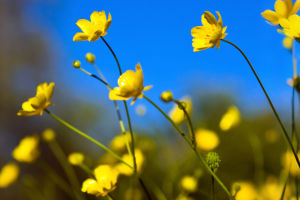In the wonderful world of nature, many plants have unique growth methods and uses. Among them, Striped Onion (Drimia indica) is a mysterious plant with medicinal value.
We may not be familiar with it, but this perennial herb from the Asparagaceae family has long occupied a place in traditional medicine and horticulture. Today, let us explore the mystery of Striped Onion, understand its morphological characteristics, uses, and how to use it safely.
What does Striped Onion look like?
Striped onion is a plant with thick, scaly stems that allow it to store water and grow tenaciously in drought conditions. Its leaves are striped, which is also the origin of its name. When it enters the flowering period, slender flower stems will emerge from between the leaves, dotted with a bunch of small and delicate white or lavender flowers, forming an elegant raceme that attracts many insects. This unique appearance makes striped onion also popular among gardening enthusiasts.
Medicinal value of striped onion
Since ancient times, striped onion has been widely used in traditional herbal medicine. We can find it in many medical texts, especially in Asia and Africa, where people use it to make ointments, powders or decoctions to treat coughs, respiratory discomfort and skin problems. It is said that some of its active ingredients are also helpful in relieving inflammation and promoting wound healing.
However, it is important to note that striped sea onions contain certain alkaloids that may have adverse effects on the human body if not properly handled, so a professional should be consulted before use.
How to grow striped sea onions?
If we want to grow striped sea onions at home or in the garden, then choosing the right environment is crucial. This plant prefers well-drained sandy soil and needs plenty of sunlight to promote healthy growth. When planting, make sure the soil is not too wet to prevent the scales from rotting. In addition, striped onions are highly adaptable and can survive even in relatively poor environments, making them particularly suitable for lazy gardening or greening in arid areas.
Other uses of striped onions
In addition to its medicinal and ornamental value, striped onions are also used in the production of traditional handicrafts in some areas. For example, its leaf fibers can be used for weaving, and some parts can be used to extract natural dyes. In addition, people in some areas believe that striped onions have symbolic significance and regard them as plants that bring good luck and health, and place them at home to pray for peace.
Future development of striped onion
With the continuous advancement of modern science and technology, the potential value of striped onion is still being explored. Researchers are exploring its chemical composition, hoping to develop more medicinal products to benefit human health. At the same time, the horticultural industry is also trying to cultivate more cold-resistant or climate-adapted striped onion varieties to make it a more popular ornamental plant.
Explore the mysteries of nature
Although striped onion is not as well-known as some well-known herbs, its unique appearance, drought tolerance and medicinal value make it a plant worth learning more about. In the future, as our knowledge of plants continues to improve, perhaps there will be more surprising discoveries about striped onions. Let us pay attention to these wonderful creatures from nature, explore their potential, and cherish this land that gives us rich resources!
Are you curious about striped onions? Feel free to share your thoughts or experiences in the comments section, and let us explore more knowledge about this mysterious plant together!


